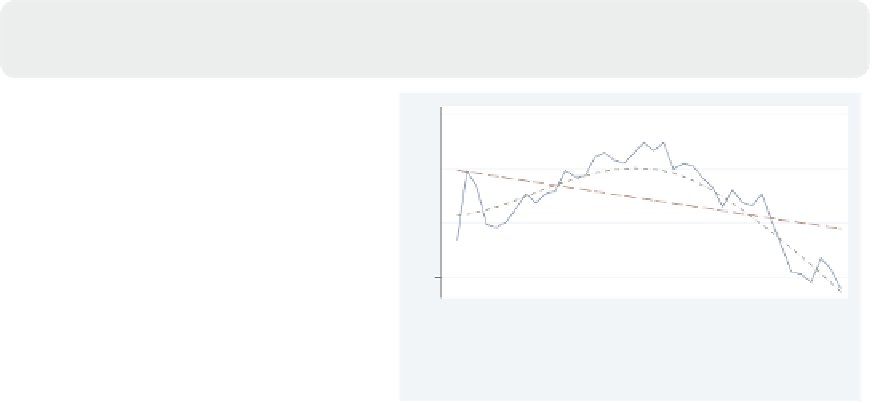Graphics Reference
In-Depth Information
twoway (line close tradeday,
clpattern("l")
sort)
(lfit close tradeday, clpattern(
" ##"
))
(lowess close tradeday, clpattern(
"-.#"
))
This example shows other formulas we
could create, including
" ##"
,which
yields long dashes with short and then
long breaks in the middle, and
"-.#"
,
which yields a short dash, a dot, and a
space. Using these formulas, we can
create a wide variety of line patterns for
those instances where we need to
differentiate multiple lines.
Uses spjanfeb2001.dta & scheme vg s2c
0
10
20
30
40
Trading day number
Closing price
Fitted values
lowess close tradeday
palette linepalette
We can use the built-in Stata command
palette linepalette
to view a
variety of line patterns that are
available within Stata to help us choose
a pattern to our liking.
Uses spjanfeb2001.dta & scheme vg s2c
Line pattern palette
solid
dash
longdash_dot
dot
longdash
dash_dot
shortdash
shortdash_dot
blank
10.7
Line width
We can indicate the width of a line in two ways. We can indicate a
linewidthstyle
,
which allows us to use a word to specify the width of a line, including
none
(no width,
invisible),
vvthin
,
vthin
,
thin
,
medthin
,
medium
,
medthick
,
thick
,
vthick
,
vvthick
,and
even
vvvthick
. We can also specify a
relativesize
, which is a multiple of the line's normal
thickness (e.g., *2 is twice as thick, or *.7 is .7 times as thick). See [
G
]
linewidthstyle
for
more information.
The electronic form of this topic is solely for direct use at UCLA and only by faculty, students, and staff of UCLA.


















































